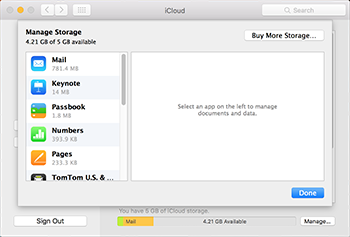
Apple's crowded September 9th press event was about many things, but one of the facets that was most interesting to me was their treatment of various storage-related issues. I'll highlight four separate portions of their emerging strategy and look at what they mean.
1) Even on Apple's highest end smartphones, you still start with a minimal amount of storage. The brand new iPhone 6S and 6S Plus still offer 16 GB as the entry level storage, despite a) continuous rumors that Apple will upgrade to 32 GB and b) the undeniable fact that an additional 16 GB would not cost Apple very much per unit.
2) It now looks extremely likely that iOS 9 will more than hold the line on operating system storage requirements. It can more efficiently stream updates to an iOS device, which cuts down on the amount of space that it takes to install the operating system. One major and justifiable complaint with iOS 8 was the approximately 4.5 GB of space it took to install the update, preventing many with 16 GB devices from updating to the operating system. With these optimizations, iOS 9 requires only about 1.3 GB of space to install.
If a device still has insufficient space to update to iOS 9, there's now a popup dialog that offers to temporarily delete some apps in order to make room. Apps that are deleted are then reinstalled and replaced after the operating system update is completed. I'm not sure that this will help many users, but there are probably some edge cases here.
3) In contrast to the new iPhones, the iPad Pro's storage sizes indicate that Apple hopes that it will compete with lightweight notebooks. The minimum storage size on Apple's new 12.9-inch beauty is 32 GB with one $150 jump up all the way to 128 GB—notably the most popular storage size for Microsoft's Windows 10-based Surface Pro 3.
4) Finally Apple wants to make its cloud storage more attainable. While the free amount of iCloud storage is still only 5 GB, at the press event Apple announced that paying 99 cents a month will soon (probably around September 16th) get a subscriber 50 GB of storage instead of 20 GB. Pricing for the 200 GB tier will also be adjusted downward from $3.99 to $2.99. In addition, the 500 GB tier will be replaced at the $9.99 price point by the 1.0 TB level.
| Old | New | |
| 5 GB | Free | Free |
| 20 GB | $0.99/month ($0.05 per GB) | NA |
| 50 GB | NA | $0.99/month ($0.02 per GB) |
| 200 GB | $3.99/month ($0.02 per GB) | $2.99/month ($0.015 per GB) |
| 500 GB | $9.99/month ($0.02 per GB) | NA |
| 1.0 TB | $19.99/month ($0.02 per GB) | $9.99/month ($0.01 per GB) |
All of this means that Apple's paying customers will soon be spending significantly less per GB no matter what tier they're in. Perhaps this will keep at least some users from turning to the "big four" personal cloud storage vendors (Box, Dropbox, Google, and Microsoft). I believe that Apple-centric users should at least consider using iCloud storage when they need more than the free 5 GB—the decision point will be Apple's better integration versus the big four's lower costs.
John Mulhern III, Posted 9/13/2015
For more information on iOS 9 visit:
http://www.apple.com/ios/
For more information on Apple's iCloud visit:
http://www.apple.com/icloud/



